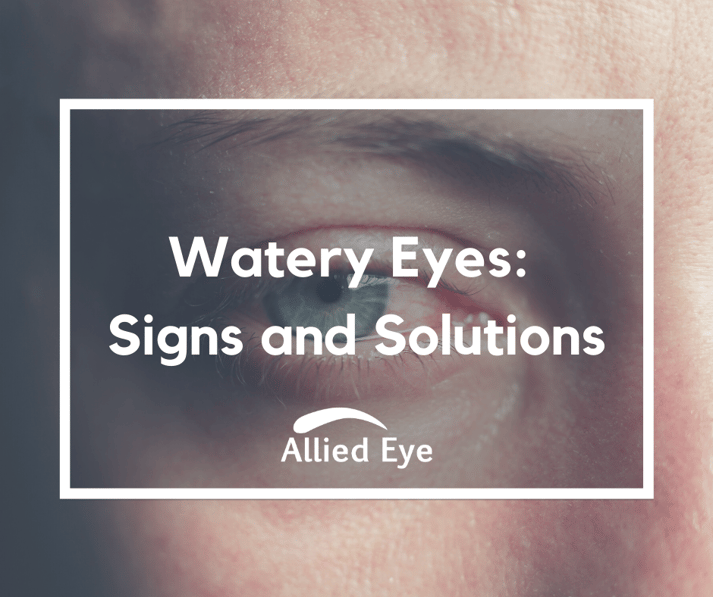
Common Causes of Watery Eyes
If you suffer from watery eyes, chances are good that one of the following could be causing your problem:
- Allergies not only make you sniff and sneeze, they can make your eyes watery, red and itchy. Seasonal pollen, pet dander and dust mites are some of the allergens that can make you tear up.
- Dry eyes sound like the opposite of watery eyes, but dryness is a common eye irritant. When the eyes are irritated, the immune system overcompensates by making too many tears.
- Blocked tear ducts happen when your tear drainage ducts cannot drain freely into your nose, due to narrowing or blockage.
- Pinkeye (conjunctivitis) is a common eye infection that causes excessive tears along with a pink or red discoloration of the white part of the eye. Pus or mucus may be present, and you may wake up with your eye crusted shut.
- Cornea problems can range from a small scratch to an open ulcer. Keratitis is an inflammation of the cornea that can cause your tear production to escalate.
How to Treat Common Causes of Watery Eyes
It’s important to get an accurate diagnosis for your watery eye problem. The best way to get to the bottom of it is to schedule an exam at Allied Eye. If one of the conditions listed above are causing your problem, here are some of the solutions Dr. Matzkin may suggest:
- Allergies can often be treated with over-the-counter antihistamines and eye drops. If these are ineffective, prescription medications or allergy shots may be necessary.
- Dry eyes are often helped by using artificial tears. You may need a prescription to reduce inflammation or help your body produce tears. There are other treatment options if these don’t work.
- Blocked tear ducts require medical treatment. Dr. Matzkin may flush the duct, or use another procedure to restore proper drainage.
- Pinkeye, or conjunctivitis, treatment will vary depending on whether it’s caused by allergies, bacteria or a virus. The condition may improve on its own, or you may be prescribed eye drops.
- Cornea problems are treated according to their severity. Antibacterial, antifungal or antiviral eye drops may be used in conjunction with drops that reduce inflammation. Severe cases may require a corneal transplant.
Could your watery eyes be caused by conjunctivochalasis?
This long, difficult-to-pronounce word is one that you’ve probably not heard of. Conjunctivochalasis basically means having a loose, redundant conjunctiva. The conjunctiva is the “sleeve” on the eyeball. It is clear tissue that covers the white part of the eye and the underside of the eyelid.
As we age, this tissue loses its elasticity and begins to relax. If it relaxes enough, it can flop around and rub against the cornea. The redundant tissue can also form a fold that irritates the eye. Watery eyes result from this irritation, and the excess tissue can block tears from flowing properly down the drainage channel.
Conjunctivochalasis is frequently misdiagnosed and underdiagnosed. It’s most common in adults over the age of 50. Patients with autoimmune thyroid disease are more susceptible to the condition, and it’s more prevalent in obese individuals. Wearing contact lenses may contribute to the development of conjunctivochalasis.
Conjunctivochalasis Treatment at Allied Eye
Treatment for conjunctivochalasis is available at Allied Eye. Conjunctivoplasty is a simple, in-office procedure that uses a laser-like device to rearrange and reduce the excess eye tissue. The procedure is painless and only takes a few minutes to complete. Antibiotic ointment will be placed in the eye, and you will need a follow-up exam about a week later. Call us to schedule an appointment if you're experiencing conjunctivochalasis! (423) 855-8522

